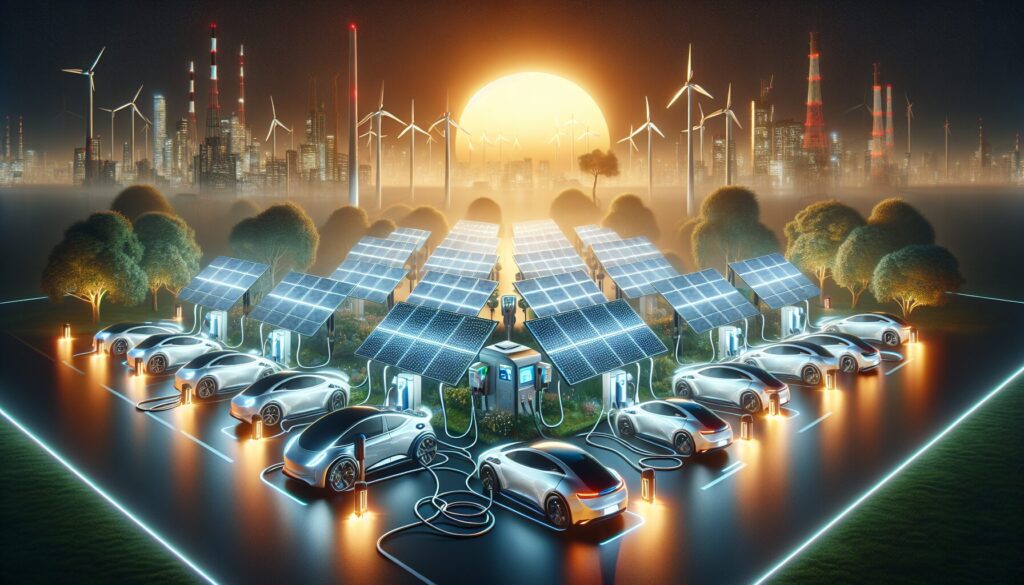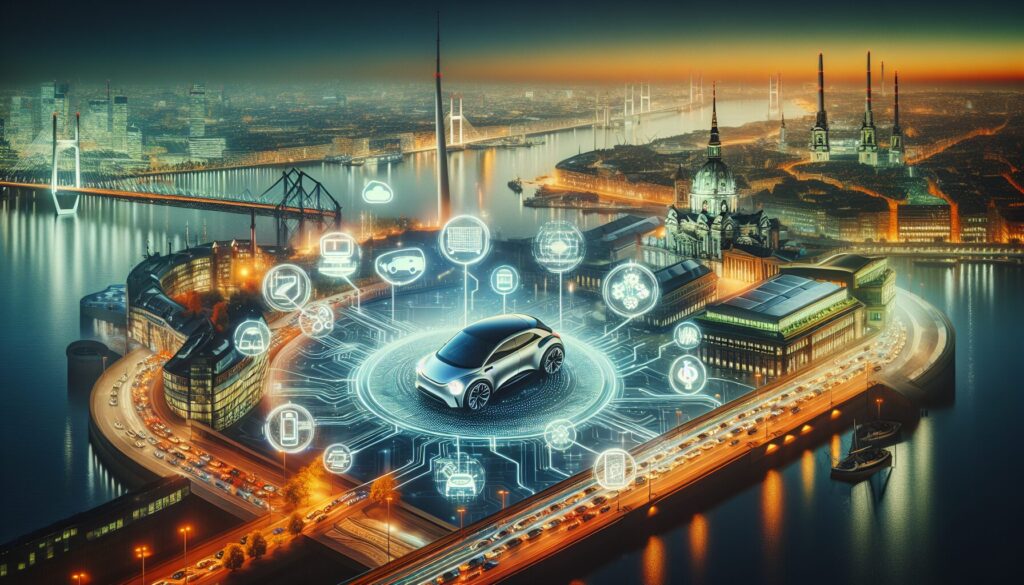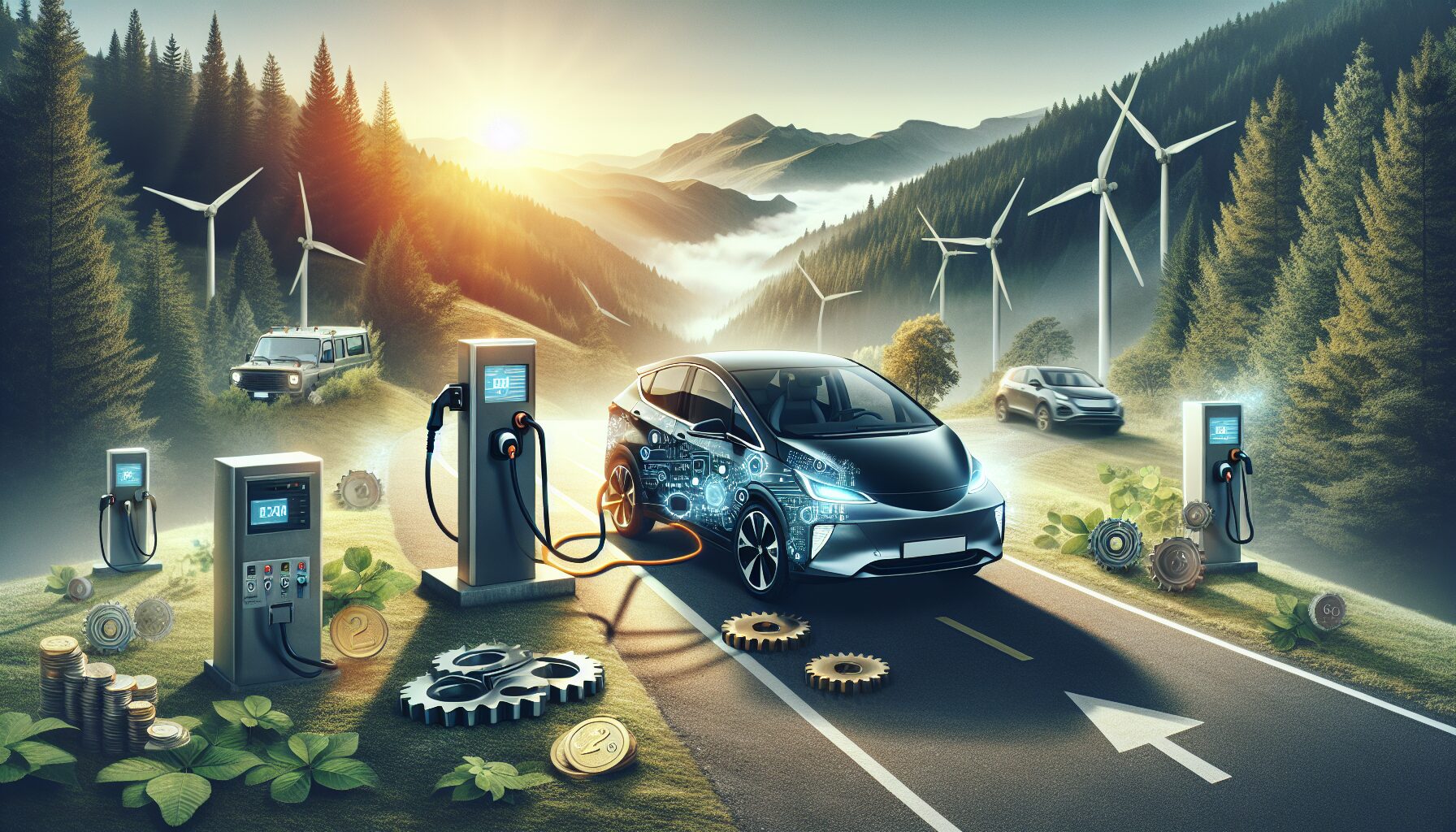Imagine being able to power your home with the energy stored in your electric vehicle (EV). That’s what Vehicle-to-Grid (V2G) technology is all about, and it’s as exciting as it sounds! I remember the first time I heard about V2G; it was during a tech expo in Auckland. The idea of bi-directional inverters allowing electricity to flow both to and from the grid was mind-blowing. These systems use the OpenADR protocol to communicate with the grid, optimizing when to charge and discharge based on demand. Plus, state-of-charge (SOC) optimization algorithms ensure your EV’s battery is always at the right level. It’s not just about saving money; it’s about creating a sustainable future. Here in New Zealand, where renewable energy is a big deal, V2G could be a game-changer. Companies like Vector Limited and Transpower New Zealand are already exploring its potential.
Related: The A-Z of Vehicle-to-Grid (V2G) Technology: Your Complete Reference
Key Components of V2G Systems
Every time I think about the components that make V2G systems tick, I can’t help but recall the first time I saw a bidirectional inverter in action. It’s like the backbone of these systems, allowing energy to flow both to and from the grid. This flexibility is crucial for optimizing the state of charge (SOC) in electric vehicles. When you’re dealing with something as dynamic as New Zealand’s renewable energy landscape, having such adaptable technology is a game-changer.
However, bidirectional inverters aren’t the only stars of the show. Open Charge Point Protocol (OCPP) is another key player. It ensures that all charging stations can speak the same language, so to speak. This universal communication protocol makes it easier for different manufacturers and service providers to work together seamlessly. It reminds me of a harmonious orchestra, where every instrument knows its part, creating an efficient and beautiful symphony.
The Role of Communication and Control
Additionally, effective communication between the vehicle and the grid is paramount. That’s where systems like OpenADR come into play. They help manage demand response, ensuring that energy flows are balanced and efficient. Imagine being able to optimize your vehicle’s SOC while contributing to grid stability—it’s a win-win!
Furthermore, the control systems that facilitate these processes are vital. They use algorithms to make real-time decisions on energy distribution. This ensures that both the grid and the vehicle operate at their best. University of Auckland has done some fascinating research in this area, continuously pushing the boundaries of what’s possible.
In conclusion, the key components of V2G systems work together like a well-oiled machine. From bidirectional inverters to communication protocols, each element plays a crucial role in making the ultimate V2G experience a reality in New Zealand.
Benefits of Implementing V2G Solutions

Imagine this: you’re sipping your morning coffee, glancing at the vibrant New Zealand landscape, and your electric vehicle (EV) is not just parked in your driveway—it’s actively balancing the grid! Implementing V2G solutions can turn this dream into reality. One of the most exciting benefits is the potential for cost savings. A bidirectional inverter, part of your V2G setup, allows your EV to discharge energy back to the grid when demand is high. This can earn you some extra cash, helping to offset the cost of charging during off-peak hours.
Additionally, V2G technology enhances grid stability. By integrating protocols like OpenADR 2.0b and the ISO 15118 communication standard, your vehicle can communicate seamlessly with the grid. This ensures energy flows are optimized, reducing the risk of blackouts. Plus, it supports the integration of renewable energy sources, which is a big win for our environment.
Boosting Energy Independence
Adopting V2G solutions can also boost energy independence. In New Zealand, where renewables are a significant focus, using your EV to store excess solar power is a brilliant strategy. This stored energy can be used later, reducing reliance on fossil fuels. Organizations like Transpower New Zealand are actively researching these solutions, aiming to create a more resilient energy future.
Furthermore, businesses and homeowners alike can benefit from improved energy management. SOC optimization algorithms help in managing how much energy your EV uses and stores. This means you can plan your energy usage better, saving money, and supporting the grid.
According to Energy New Zealand, V2G technology could play a significant role in the country’s energy strategy. It’s not just about technology—it’s about creating a sustainable future.
Challenges and Considerations in V2G Deployment
Deploying V2G technology in New Zealand is super exciting, but it’s not without its hurdles. Imagine you’re all set to integrate OpenADR protocols, only to find out the local grid isn’t quite ready for it. It reminds me of the time I tried to sync up a bidirectional inverter with my home setup. Everything seemed perfect on paper, but in practice, aligning the SOC optimization algorithms with the grid’s capabilities was a maze! Talk about a technical workout.
Moreover, compatibility is a biggie. When you’re dealing with different systems, like the Open Charge Point Protocol (OCPP), ensuring smooth communication is crucial. Just like when you’re trying to get your phone to chat with a new app, sometimes the tech just doesn’t speak the same language. This can lead to hiccups in energy distribution and management, which isn’t ideal when you’re keen on maximizing efficiency.
Regulatory and Infrastructure Challenges
New Zealand’s unique landscape offers its own set of regulatory and infrastructure challenges. The policies here might not always align with what’s needed for seamless V2G integration. It’s like trying to fit a square peg in a round hole. For instance, local regulations might limit the full potential of V2G benefits, making it essential to work closely with organizations like Transpower New Zealand. They’re pivotal in ensuring the grid can handle these innovative demands.
Furthermore, consumer education is vital. Many folks might not be familiar with the ins and outs of V2G technology. This can lead to hesitancy in adopting these systems. Educating users on how V2G can benefit them individually and collectively can make a world of difference. For those keen on diving deeper, exploring resources like our complete reference to V2G technology is a great start. Balancing these challenges with future advancements will be key to unlocking the full potential of V2G in New Zealand.
Step-by-Step V2G Technology Checklist

Alright, let’s dive into the nitty-gritty of setting up your V2G technology! Imagine you’re getting a new gadget, a bit like when I first tinkered around with my fancy bidirectional inverter. It was a game-changer, much like setting up V2G can be for you. So, let’s break it down step-by-step for a smooth journey.
First things first, ensure your vehicle is compatible with V2G technology. Not all EVs have this capability, so it’s essential to check beforehand. Once that’s sorted, it’s time to consider the bidirectional inverter. This piece of tech is crucial as it allows energy to flow both to and from your vehicle. It’s like the heartbeat of your V2G setup.
Connecting and Optimizing
Next, you’ll want to connect your vehicle to the grid using the Open Charge Point Protocol (OCPP). This ensures seamless communication between your EV and the grid. When I set up mine, it was thrilling to see it all come together. However, don’t forget to optimize the state-of-charge (SOC) algorithms. These ensure your vehicle’s battery is managed efficiently, maximizing both its lifespan and energy exchange.
Additionally, integrating OpenADR 2.0b is vital. This helps in managing demand response and ensures your system operates smoothly within New Zealand’s unique energy landscape. Trust me, this step is a lifesaver! Finally, keep an eye on updates from organizations like New Zealand Transport Agency and Energy Efficiency and Conservation Authority. They’re packed with insights and updates that can further enhance your V2G experience.
Case Studies of Successful V2G Implementations
One sunny afternoon in Wellington, I had the chance to chat with a local energy enthusiast, Mike. He was beaming with excitement about a recent project involving the OpenADR 2.0b protocol and its impact on V2G technology. He told me about a fascinating case study from Vector Limited, a company that’s been making waves in New Zealand with its innovative energy solutions. They implemented a V2G system using state-of-charge optimization algorithms and bidirectional inverters, which allowed electric vehicles to feed energy back to the grid during peak demand. How cool is that?
Another case that caught my attention involved Mercury Energy. They’re leveraging the CHAdeMO charging standard to efficiently manage energy distribution. This not only enhances grid stability but also provides EV owners with some nifty cost savings. The integration of the Open Charge Point Protocol (OCPP) made communication between chargers and the network seamless. This is crucial for scaling V2G solutions across the country.
These projects highlight how V2G is gaining traction in New Zealand. The synergy between advanced technologies and local energy companies is truly inspiring. With more companies adopting these systems, we’re seeing a transformative shift in how we think about energy consumption and sustainability. It’s stories like these that make the journey into the world of V2G so thrilling.
Conclusion
Ultimately, the potential of Vehicle-to-Grid technology in New Zealand is immense, promising not just economic benefits but also a sustainable energy future. By integrating innovative systems and protocols, V2G is transforming how we interact with energy, making it possible for electric vehicles to play an active role in stabilizing the grid and promoting renewable sources. With ongoing advancements and promising case studies, the path forward is not only exciting but also essential for a greener tomorrow. Keep charging forward!
Continue Exploring
Unlock the future of energy with our comprehensive guide to Vehicle-to-Grid (V2G) Technology. Discover how this cutting-edge system is revolutionizing how we power our lives and vehicles. Don't miss out on the knowledge that could transform your understanding of sustainable energy!
Frequently Asked Questions
What are the essential components included in a comprehensive V2G technology checklist?
A comprehensive V2G technology checklist typically includes components such as a compatible electric vehicle, a V2G-capable charging station, reliable energy management software, utility partnerships for grid integration, and a monitoring system for tracking energy flows and usage.
How does vehicle-to-grid technology benefit electric vehicle owners in terms of energy savings?
Vehicle-to-grid technology benefits electric vehicle owners by allowing them to sell excess energy stored in their vehicle’s battery back to the grid, potentially reducing their energy costs. Additionally, V2G can help balance the load on the grid, which can lead to lower overall utility rates and incentives from energy providers.
What are the important regulatory considerations for implementing V2G technology?
Important regulatory considerations for implementing V2G technology include compliance with local grid codes, understanding utility tariffs and policies, ensuring cybersecurity measures are in place to protect data and infrastructure, and obtaining necessary permits and approvals from regulatory bodies to operate V2G systems legally.


Leave a Reply